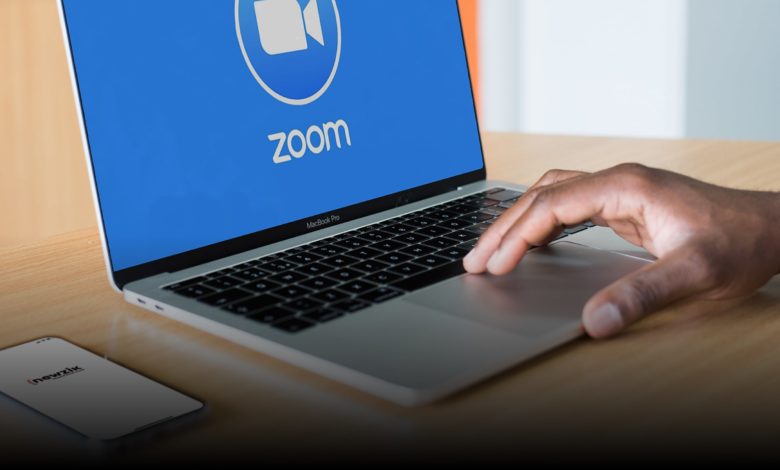Zoom for Teachers

What is Zoom ?
If you work from home, you’ve most likely heard of Zoom. One of the market’s leading video conferencing device applications. It enables you to communicate with colleagues or supervisors remotely when face-to-face encounters are not possible.This makes telecommuting appear lot more ethical since it allows you to feel connected.
How Does Zoom Work ?
Zoom allows for one-on-one chat sessions that can progress into group calls, internal and external audience webinars and training sessions, and global video meetings with up to 1,000 participants and up to 49 videos on-screen.
The free tier allows for limitless one-on-one meetings, while community sessions are limited to 40 minutes and 100 participants. Paid plans start at $15 per month per host.
Zoom has four pricing tiers.
Zoom Free:
This tier is completely free. You can have an endless number of meetings. Group meetings with multiple members are limited to 40 minutes in length, and assemblies cannot be registered.
Zoom Pro:
This package costs $14.99/£11.99 per month and includes a host meeting. It allows hosts to create personal meeting IDs for repeat Zoom Meetings and allows for cloud or computer recording meetings, however it limits community meeting periods to 24 hours.
Company zoom:
This fee is $19.99/£15.99 per month and is used to host meetings (minimum 10). It allows you to personalise Zoom meetings with vanity URLs and brand logos, as well as give transcripts of cloud-recorded Zoom sessions and dedicated customer service.
Zoom Enterprise:
This rate is meant for businesses with a staff of 1,000 or more and costs $19.99/£15.99 per month per meeting host (minimum 100). It provides free cloud video capacity, a customer service manager, and discounts on webinar and zoom room rentals.
Added-Zoom Rooms:
If you wish to use Zoom Rooms, you may sign up for a free 30-day trial. After that, Zoom Rooms cost $49/£39 per month and a room subscription, whereas Zoom webinars cost $40/£32 per month and a host subscription.
Zoom for Teachers
Distance learning has become the new norm for teachers all around the world. Teachers attempt to discover novel ways to reach and educate their students. Zooming can be an excellent solution for this.
If you’ve never used Zoom before, attempting it on your own can be intimidating, so we’ve compiled a list of everything you need to know, as well as some fun activities, to get you started. It’s a wonderful way to kick off a morning Zoom meeting with your class. Begin with a question chosen by each student to be answered.
Morning discussion meeting slides are an excellent choice for this. To allow the pupils to read the day’s question, the teacher should open the file and select “share screen” in Zoom. Every pupil requires good reading aloud every day. Zoom simplifies everything.
Make sure that you, as the host, take up the entire screen so that the students can view the visuals clearly. Please keep in mind that the text on your website should display backwards, but they should not appear backwards on the screens of your students.
Many students still know how to utilise the Toothy Task Cards in their classrooms, so why not reintroduce Virtual Toothy in these uncertain times? The teacher displays her screen while the digital version is viewed on his or her computer. Students complete the problem on a whiteboard using a sheet of paper.
“1, 2, and 3,” the teacher instructs. The children will all raise their hands at the same moment, and the teacher will place a tooth in Toothy’s mouth. This is popular among children. Show and tell may be a wonderful way to end the week. It can also serve as an incentive to work hard during the week. This might be a fantastic opportunity for pupils to share a pet, a sibling, or even a personal tale.
To accomplish this, ensure that all students are quiet and that pupils have a swift 30 second interchange time. It could be a good idea to have name sticks to draw for each boy’s turn. Sketches with instructions are popular among children.
On YouTube, Art Center for Kids is an amazing pick.
While the lecturer shares their screen, the pupils can sketch their own. Each student can take turns presenting their painting to the class until the drawing is finished. Extend this project by assigning it as a writing work to do at home, and then return to the next Zoom call to read aloud—function Pictionary using a Zoom Whiteboard.
To use Zoom’s whiteboard, click the Sharing Screen icon in the meeting toolbar, select the whiteboard, and then press Sharing. You will then see annotation tools that will allow you to draw with your mouse, just like in Pictionary. Students enjoy playing Kahoot at school, so why not put it on Zoom? To do this, log in to your Kahoot account and locate your Kahoot host.
Then connect to Zoom and make sure the webcam, microphone, and speaker are all turned on. Then, click play to launch Kahoot, and the PIN game lobby will display. After then, share your screen so that everyone who enters can see the game Button.
Finally, host the Kahoot as usual, taking care not to mention the music that plays throughout the countdown timer — you can either wait until the final answers are presented to chat, or mute your voice to discuss the game’s music.
Read also 3 best video chat API providers for business in 2021




